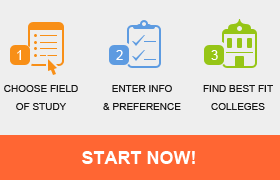Culver-Stockton College
STUDENTS AND FACULTY
Enrollment: 723.
Student Body: 55% female, 45% male, 48% out-of-state, 3% international (13 countries represented). Asian 1%, African American 10%, Caucasian 87%, Hispanic 2%, Native American 1%.
Retention and Graduation: 59% freshmen return for sophomore year. 43% freshmen graduate within 4 years. 20% grads go on to further study within 1 year. 8% grads pursue arts and sciences degrees. 3% grads pursue law degrees. 5% grads pursue business degrees. 3% grads pursue medical degrees.
Faculty: Student/faculty ratio 13:1. 45 full-time faculty, 76% hold PhDs, 9% are members of minority groups, 36% are women.
ACADEMICS
Degrees: Bachelor’s.
Classes: Most classes have 10-19 students. Most lab/ discussion sessions have 10-19 students.
Majors with Highest Enrollment: Business administration and management; elementary education and teaching; nursing/registered nurse (RN, ASN, BSN, MSN).
Special Study Options: Accelerated program, distance learning, double major, dual enrollment, honors program, independent study, internships, liberal arts/career combination, student-designed major, study abroad, teacher certification program.
Honors programs: Honors Scholars are expected to complete both an academic and enrichment requirement. Combined degree programs: BA/MA, Washington University OT program. Special programs offered to physically disabled students include note-taking services, reader services, tape recorder’s, tutors.
Career services: Alumni network, alumni services, career/job search classes, career assessment, internships, regional alumni.
Career services highlights include: All students participate in experiential learning since fall 2008 as part of the new CSC@EXP curriculum.
FACILITIES
Housing: Coed dorms, fraternity/sorority housing. 40% of campus accessible to physically disabled.
Special Academic Facilities/Equipment: Art gallery, performing arts center.
Computers: 100% of classrooms, 100% of dorms, 100% of libraries, 100% of dining areas, 100% of student union, 100% of common outdoor areas have wireless network access. Students can register for classes online. Administrative functions (other than registration) can be performed online.
CAMPUS LIFE
Environment: Rural.
Activities: Choral groups, concert band, dance, drama/ theater, jazz band, literary magazine, music ensembles, musical theater, pep band, radio station, student government, student newspaper, campus ministries, international student organization, Model UN.
Organizations: 44 registered organizations, 11 honor societies, 4 religious organizations. 4 fraternities, 3 sororities.
Athletics (Intercollegiate): Men: Baseball, basketball, cheerleading, cross-country, football, golf, soccer, track/field (outdoor), track/field (indoor). Women: Basketball, cheerleading, cross-country, golf, soccer, softball, track/field (outdoor), track/field (indoor), volleyball.
On-Campus Highlights: Computer labs, Cats ‘Pause’, Cafeteria, Joe Charles Field House, Activity & Recreation Center. Environmental Initiatives: Thermostat control, recycling focus group, limited use of disposable containers.
ADMISSIONS
Freshman Academic Profile: Average high school GPA 3.27. 14% in top 10% of high school class, 36% in top 25% of high school class, 72% in top 50% of high school class. 93% from public high schools. SAT Math middle 50% range 460-700. SAT Critical Reading middle 50% range 410-750. ACT middle 50% range 19-24. Minimum paper TOEFL 500. Minimum computer TOEFL 176. Minimum web-based TOEFL 61.
Basis for Candidate Selection: Very important factors considered include: Academic GPA, standardized test scores. Important factors considered include: Rigor of secondary school record. Other factors considered include: Application essay, recommendation(s), alumni/ae relation.
Freshman Admission Requirements: High school diploma is required and GED is accepted. Academic units recommended: 4 English, 2 mathematics, 2 science, 3 social studies.
Freshman Admission Statistics: 1,439 applied, 61% admitted, 24% enrolled.
Transfer Admission Requirements: College transcript(s), minimum college GPA of 2.0 required. Lowest grade transferable C-.
General Admission Information: Notification on a rolling basis, beginning on or about 10/15. Nonfall registration accepted. Admission may be deferred for a maximum of 1 year. Credit and/or placement offered for CEEB Advanced Placement tests.
COSTS AND FINANCIAL AID
Annual tuition $22,250. Room and board $7,600. Required fees $300. Average book expense $1,000.
Required Forms and Deadlines: FAFSA Financial aid filing deadline 6/1. Priority financial aid filing date 3/1.
Notification of Awards: Applicants will be notified of awards on a rolling basis beginning 2/15.
Types of Aid: Need-based scholarships/grants: Federal Pell, SEOG, state scholarships/ grants, private scholarships, the school’s own gift aid. Loans: Direct Subsidized Stafford, Direct Unsubsidized Stafford, Direct PLUS, FFEL PLUS, Federal Perkins, state loans, college/university loans from institutional funds.
Student Employment: Federal Work-Study Program available. Institutional employment available. Highest amount earned per year from on-campus jobs $4,954. Off-campus job opportunities are fair.
Financial Aid Statistics: 89% freshmen, 87% undergrads receive need-based scholarship or grant aid. 16% freshmen, 13% undergrads receive non-need-based scholarship or grant aid. 76% freshmen, 76% undergrads receive need-based self-help aid. 7% freshmen, 10% undergrads receive athletic scholarships. 99.3% freshmen, 99.2% undergrads receive any aid. 90.3% undergrads borrow to pay for school. Average cumulative indebtedness $23,761.
Criteria for awarding institutional aid: Non-need-based: Academics, alumni affiliation, art, athletics, job skills, leadership, music/ drama, religious affiliation, state/district residency.

